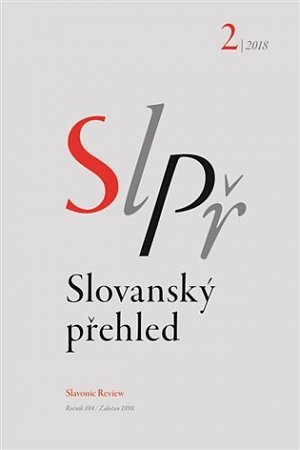| Nakladatel: |
Historický ústav AV ČR, v.v.i. |
| Kód |
D0441699 |
Z obsahu:
DULOVIČ Erik
"Nelze-li zachovati dosavadní hranici…" K účasti českých vedcov pri riešení československo-po?ského územného sporu o Oravu a Spiš v rokoch 1918-1920
s. 245-277
"If the present border cannot be preserved…” On the Participation of Czech Scholars in Resolving the Czechoslovak-Polish Territorial Conflict over Orava and Spiš in the Years 1918-1920 The territorial conflict over Orava and Spiš gained crucial importance after the First World War, even though it was a less important aspect of Czechoslovakia and Poland's negotiations over the question of Cieszyn Silesia. This study discusses the genesis of the problem and the content of analyses by Czech scholars writing on the Orava-Spiš territorial issue, which they had addressed under the auspices of the Office for Preparations for the Peace Conference and from within the corps of expert advisors to the Czechoslovak delegation in Paris. Papers by Viktor Dvorský, Lubor Niederle, Karel Chotek, and Adolf Černý, from the fields of geography, ethnography, and linguistics drew upon research and methodological standpoints from the period before the founding of Czechoslovakia. During the final diplomatic negotiations for demarcating the Czechoslovak-Polish borders in July 1920, Minister of Foreign Affairs Edvard Beneš supported his position on the question of Orava and Spiš with the military-strategic perspective of the geographer V. Dvorský.
KULIGOWSKI Piotr
Religious language in politics: The case of Polish radicals in exile, 1828-1852
s. 279-302The aim of this article is to examine the issue of religious language within the framework of the discourse of Polish radicals in exile in the period 1828-1852. The first part defines the research question concerning the structures of discourses, types of arguments, and the meaning of key concepts. The next part sketches the development of religious language from the very beginning of the exile period (using the sojourn of Ludwik Królikowski and Bogdan Jański in Paris as an example) until the most elaborate stage of this discourse's development in the 1840s. The third part touches upon different dimensions of religious language, its critics, the reasons for its use by its proponents, and the question of conceptual transfers from other linguistic contexts. In the conclusion I discuss the role of religious language as a medium of political modernization.
KOŠŤÁLOVÁ Petra
Jeruzalém očima arménského poutníka: fenomén arménského poutnictví a Arméni v Jeruzalémě
s. 303-326Jerusalem in the Eyes of an Armenian Pilgrim: The Phenomenon of Armenian Pilgrimage and Armenians in Jerusalem
Jerusalem is one of the most important sites associated with monotheistic religions in the world; for the Armenian Apostolic Church it is a holy city, surb kaghak, whose significance for the Armenian community is indisputable even today. Here is situated the hajoc tagh - as the Armenian Quarter with its center at the Monastery of St. James is called - and it is also the seat of the Armenian Apostolic Seat of St. James; the head of the Patriarchate. For centuries, Jerusalem and its pilgrimage sites were the destinations of ukht, Armenian holy pilgrimage. Pilgrims (mahtes) attempted to complete a precisely planned itinerary of holy sites (tnorinakank). The text by Shimon of Lvov, an Armenian pilgrim from the beginning of the 17th century (who was also a contemporary of Kryštof Harant of Polžice and Bezdružice) and the one by the Italian traveler Pietro della Valle provide a view insight the Armenian quarter in Jerusalem right during the period of its great transformation. Within the canon of period Armenian literature and the history of the Armenian community in Jerusalem, Šimon Polský's travel memoir remains the key reference work.
POSPÍŠIL Ivo - ZELENKA Miloš
Looking at the Past and Present of Czech and Slovak Literary Development from the Central European and European Pers
| Způsob dopravy |
Cena |

|
Osobní odběr zásilkovna
Více než 200 poboček po ČR |
69 Kč*
|

|
Balík do ruky |
79 Kč*
|

|
PPL v České Republice |
95 Kč*
|

|
PPL na Slovensku |
199 Kč*
|
* K objednávce bude připočteno balné ve výši 10 Kč, cena za dobírku není zahrnuta v ceně.
Uvedené ceny jsou včetně DPH |
| Způsob platby |
Cena |

|
Twisto |
ZDARMA
|

|
Hotově na pobočce zásilkovna |
39 Kč
|

|
Bankovním převodem předem |
ZDARMA
|

|
Dobírka |
39 Kč
|


